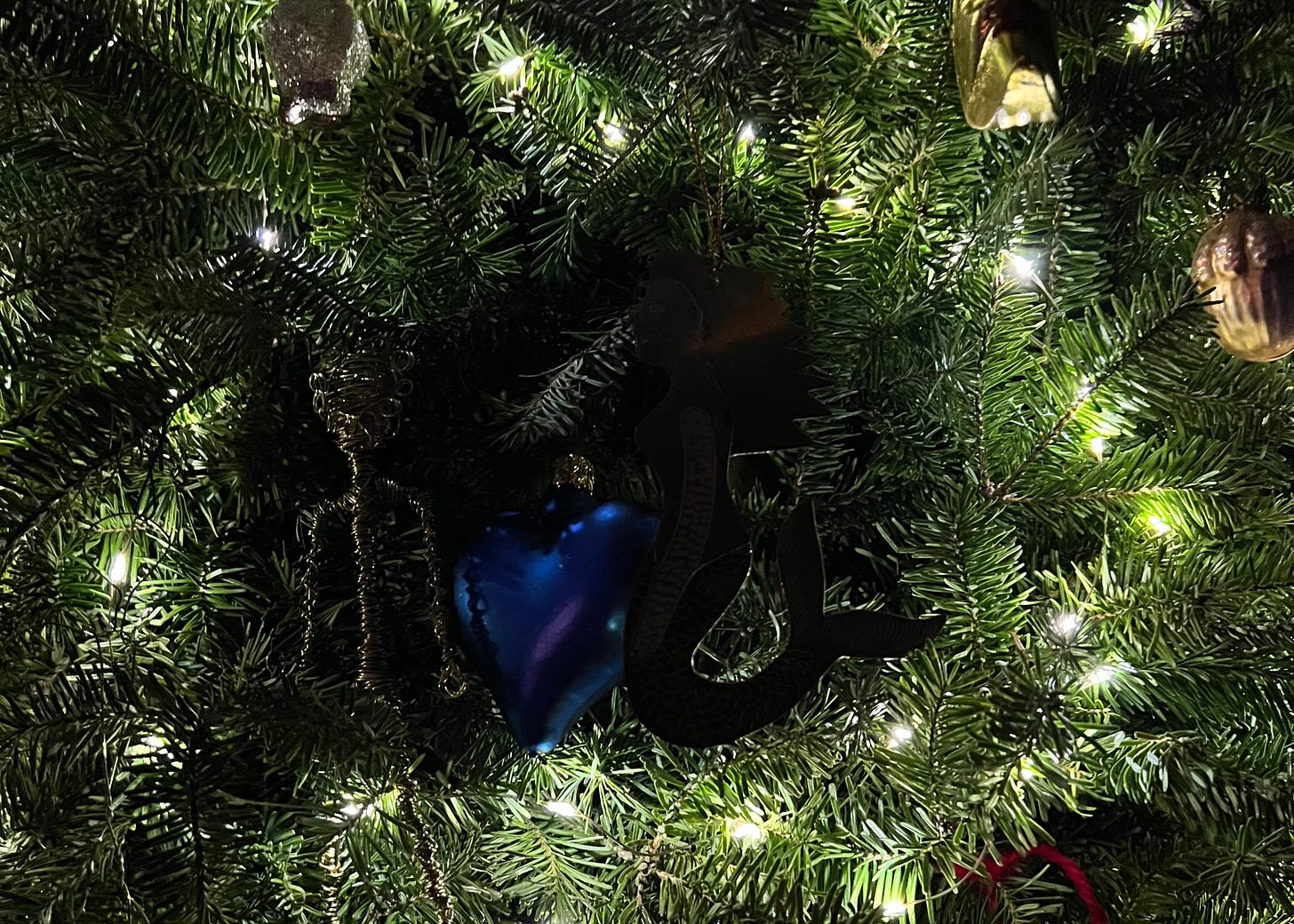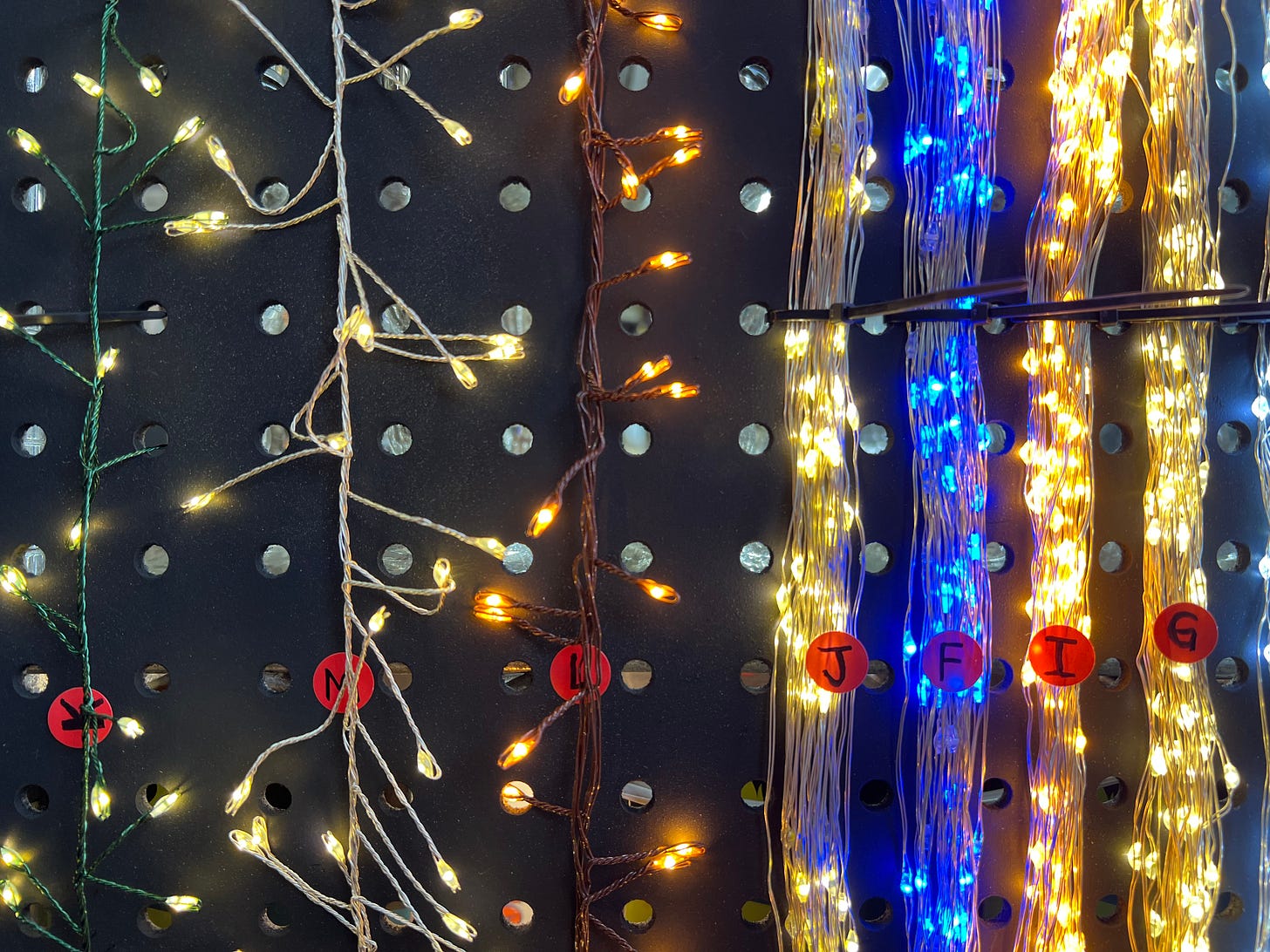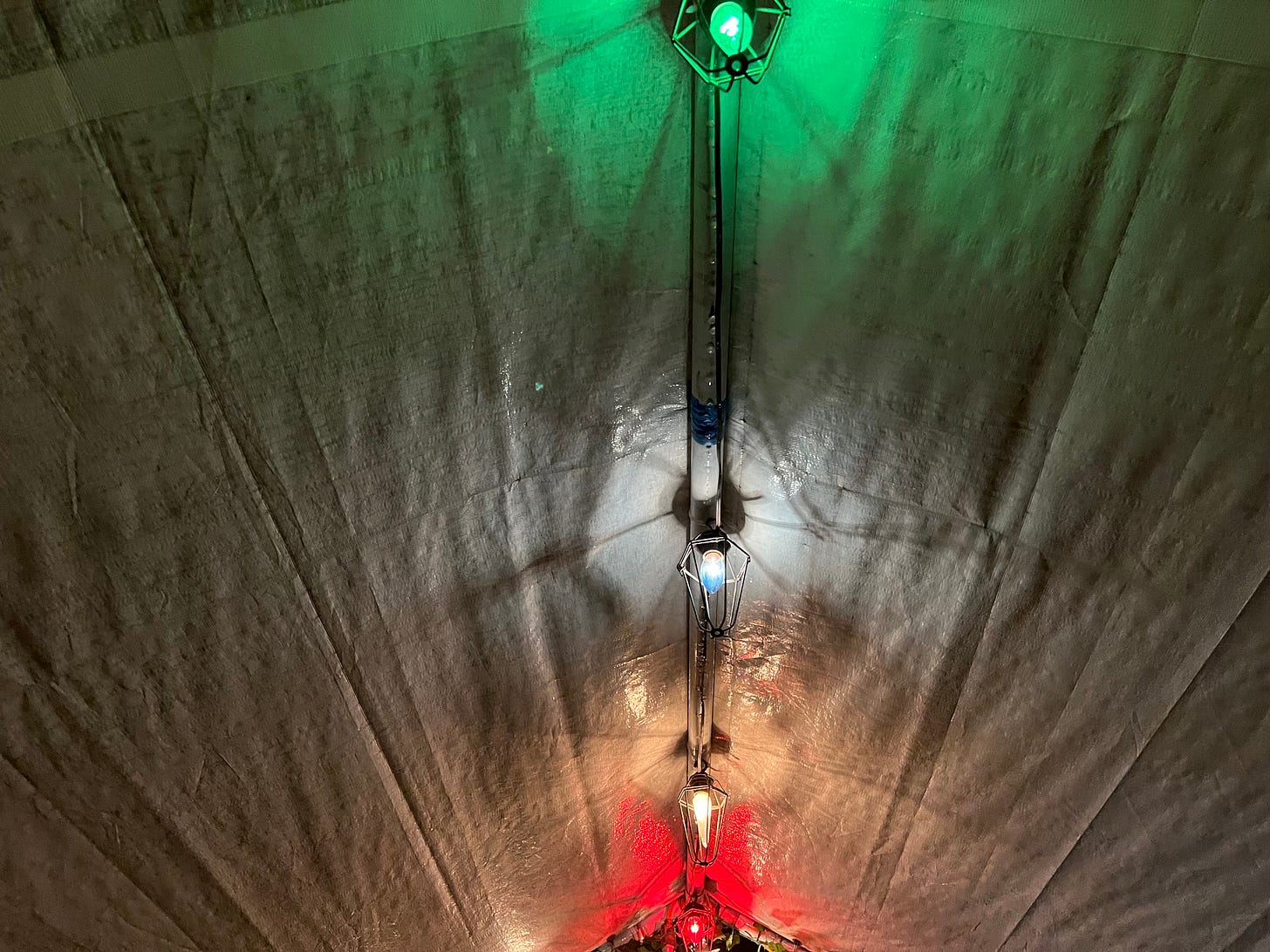This is part two of the year-end music roundup. Part one is here. A compendium of thoughts about the year itself is coming next week, and then one more original recipe post.
As of January 1 2023, this newsletter switches fully to subscriber-only action. As I said yesterday, after Bookforum shut down, it was clearly time to either make this a real shop or close it. Why not sign up now? If you don’t, there will be a dearth, an undropped shoe, an uneven number of place settings.
RIP Terry Hall, the first musician I actively tried to be.
KWALK or possibly WINO-KET: Loopy drug-and-alcohol-centric compilation of tracks from Irish label Wah Wah Wino, made mostly by the label heads and friends. Truly disoriented collection of electronic manipulations and voice samples. Why make music that tells you where you are when you could just go to where you’re not and never will be again?
Renaissance Beyoncé: “You know all these songs sound good.” This album senses its own boundaries (none) and knows its fullness (beyond the brim). Beyoncé Giselle Knowles-Carter, hyperpopular avant-garde bounce singer, created a mixtape of visceral dream meat in concert with about a hundred collaborators. It is a moon shot in the dryer, a five course meal in a paper bag covered with quick dry gel, and a disco wedding in the back seat of an uprising. Have you ever had fun?
A Brain Wholly Outside Lalén Ríos Luna: There is mention of Fernando Pessoa’s “heteronyms” in the bio for Porous Collective, the label of name behind “Lalén Ríos Luna,” and talk of both Michigan and California, so we cannot say with any certainty if there is one or ten or zero people behind this release. Our research tells us LRL is almost certainly the heteronym for Jaime Rodríguez, now living in Fresno and responsible for almost everything on Porous Collective, especially of late. The vibe is crepuscular mischief and twilight sonar. This is a delicious sprawl of unidentified sounds and textures, entirely hospitable and sparkly in its very hands-over-eyes way.
Surface of the Earth: Between 1994 and 1995, musicians Tony McGurk, Donald Smith, and Paul Toohey got together in “a cavernous wooden community hall in the city center of Wellington, New Zealand,” and let their machines ring. One guitar had no truss rod and everything was running into vintage Gunn 100-watt valve amplifiers. The keys on a Juno-106 were taped down and the whole affair was recorded with two Shure SM-58s to an Akai GXC-709D cassette deck, the one with the glass tape heads. If that seems like shit you don’t want to know, wait until you hear this album. How did they make this by doing that? There aren’t that many albums that operate in the space of “drones” and “long tones” and “noise” with this kind of peaceful vitality, that gives such a sense of profound safety. This music has been compared to the works of Tony Conrad and Éliane Radigue, and with good reason. This is a miraculous thing, a slab of bonedeep warmth.
Red Ribbon Yuta Matsumura: An addictive album that channels a kind of This Heat approach to songwriting and disassembly, using sounds of mid-Eighties pop and dub, which is another way of saying this is music of pleasure and inquiry rather than aggression and pointless invention.
To Illustrate: This is just a compilation, I suppose, on the Wisdom Teeth label, of people working in a beat-centered mode, but it overflows with so much good energy and has such a vast creative wingspan that it feels like a major statement (even if that idea is sort of dumb in this context). Maybe it’s great snapshot of something genuinely beautiful, like an iPhone shot of cherry blossoms? Like other great compilations, it feels as if these acts all worked together to make this album and, for all I know, they did. Everything, by request of label heads K-Lone and Fact, sits around the 100 BPM range, which is one point of unity. The larger commonality is the maintenance of a sunny disposition even as the beats crater or open into sandy abstraction. Ideas spring up like rushes here.
Ghost Riders : The label, Efficient Space, says these are “17 open hearted ballads recorded 1965-1974” that constitute a “trans-continental survey of those swept up in rock’n’roll mania and buoyed by local newspaper ads promising fame and gold records.” Me, a guy who likes this, hears a rock and roll compilation about the people who sat through the fast numbers but felt seen when the ballads came around, giving those strange emotions a slow and steady examination, all the words free to ring without all that competitive distortion and bang bang bang. Blue Velvet but make it amateur.
Alto//Piano Everest Magma: A bit like Tom Zé or a differently freaked Sebadoh? Everest Magma is a force in the Italian underground, ten years into a streak of thrilling records. Alto//Piano has a Harry Smith vibe, like he sang his heart out while making a bespoke gnostic cowbell mobile to ward off distemper. Then, Magma turns around to bang on a set of thin weathervanes suspended in tanks of olive oil while reciting hymns to his own private god, a guitar covered in wax and contact mics that cures blindness. The feel of the homemade is strong here, as is a relish for the process of making and editing sounds. There are not always vocals but everything sings.
Shebang Oren Ambarchi: Oren Ambarchi is our poet of evenness. The bible of this was and is Hubris (2016), a massive work that, like another composition of his, Knots, has various iterations. On Shebang, Ambarchi begins with guitar but conceives like a drummer, which he is. He is joined by a dozen or so players, building out from hammered guitar figures that reproduce the dynamic flatline of an electric fan hitting a pencil. Ambarchi introduces variation by adding instruments and shifting tonality while keeping a fixed level of attack for each instrument. It’s a play on minimalism, with more chaos in the arrangement than you’d get from Reich and more machine-like drive than you hear in an Eastman score.
Force of the Wind SOYUZ: Not even sort of Brazilian, this trio is from Minsk, of all places, if you’d like to stump your roommate. Much of this is sung in Russian, so the layers of displacement are deep. Kate NV sings in Russian, Sessa sings in Portuguese, and the rest is main band member Alex Chumak, who has a gentle and high head voice. The music is tricked out with strings and wah-wah and really hard-won arrangements.
Returns Warm Currency: Sydney musicians Mary MacDougall and MP Hopkins make music based on quietly sung texts and fragile constructions of guitar and electric organ. Feels a lot like Peter Jefferies or early Nico in its intimacy and seriousness. There are also birds.
Ballads Time is Away: Jack Rollo and Elaine Tierney of the radio duo Time Is Away have put together an idiosyncratic take on the idea of the “ballad” and it’s amazing. A compilation album that reveals the specific taste of Time Is Away more than any particular idea, Ballads ties instrumental guitar and synth pieces to strange Luxembourgish singing and makes it work. This is a world of combined longing and happiness, a sort of northern saudade.
Piece For Cello and Saxophone Terry Jennings + Charles Curtis: Conceived by Jennings, re-imagined by La Monte Young, and performed on cello by Curtis live with some pre-recorded backing, this is a masterpiece of voluntary hypnotism and time stretching. There are notes and harmonies here but forty minutes in, you won’t know what a note is.
Disharmonium - Undreamable Abysses Blut Aus Nord: Vindsval, the main and only constant member of Blut Aus Nord, describes this metal band as an expression of “bleakly maximalist harmonic unease,” which is one way of describing how he uses fretless guitars. He’s an undersung twister of metal tropes, and this album is a juicy and dark recording of gremlins howling into a long metal tube. The sliding sheets of harmonic stuff (who knows what it is) are crackling and substantial. As metal goes, this isn’t very concerned with being off-putting or aggressive—this is dreamy stuff and I can’t get enough of it.
¡Ay! Lucrecia Dalt: A summer squash encrusted with rubies, spinning at the end of a filament. This music evokes romance, disaster, cartoons, and the folded emotional avalanches of noir. I hear Latin Playboys, Tom Waits, PJ Harvey, The X-Files, and Tom Ze. Or maybe the best parallel is Björk, in terms of someone who simply gathers the instruments she needs for the task at hand. Dalt is a compelling singer and a fully clear-eyed envisioner of worlds. Imagine a Tim Burton filtering of Spanish language art songs. I like it when it folds in on itself and squelches and the trumpets and clarinets drunkenly stumble into this Weimar elevator. Hey!
Storm Queen Grace Cummings: All the critics love you in New York if you sound like Marge Simpson and make bad puns but sing like a Viking recalling her time in the streets of Laredo? Obscurity befalls thee. Watch this video to see Cummings have trouble lip syncing her own song, which is fine, because it rules. Like a half dozen rummy Seventies boys—Scott Walker, Lee Hazelwood—but better than half of them. She also sounds almost exactly like Judy Henske.
Orange CS + Kreme: The boys (Conrad and Sam) once told me that when they’re too close to Kylie Minogue or Coil, they back off the track and do something else. I think those two poles are helpful with CS + Kreme music, which is neither about songforms nor shapeless. In many instances, the tracks are carefully plotted, a bit curly and indirect. The tones and grade of the sound are exquisite, landing in the fancy audiophile zone without feeling precious. Sumptuous and baffling.
Motomami Rosalía and her TikTok (the show): We don’t get pop stars like this more than once a decade, if that. There is no genre for most of this, though the root practices of flamenco and reggaeton are probably worth looking into if you like this music. The best live show of 2022, with no close competition at all. This album is concise and intense and ambitious and polite and quick to cut, slow to burn. It’s some of the most alive machine music out there. Rosalia even got Pharrell to be of use, on a song about sex, of which she says: “so so so so so so good.” She’s so dedicated to the idea of motorcycles that she’s been dressing for the road in bespoke leather every night on tour. I’m not even sure what a motorcycle is!
Once Upon A Time Romance: The mysterious Romance collective takes (actual) Celine Dion acapellas and soaks them until they slide, waterlogged, down from the world of pop into the arcade where vaporwave is sold ten to a pack, cheap, and Oneohtrix and The Caretaker keep their kissas open ‘til dawn. It is easy to be distracted by the technology that enabled eccojams or screw music or Basinski’s fading loops, and it’s good to keep an eye on those fetishes. But a reflection of the immediate environment is central to the purpose of folk music, and that’s what vaporwave does by recycling the sounds of life spent in front of help kiosks. Romance’s churning of Celine’s everywhere voice helps us make sense of days spent with screened voices, and reminds us how great Dion’s voice is, at any speed, with or without cheese.
Immunotherapy Nozomu Matsumoto: Using Amazon’s text-to-speech cloud service, Polly, Matsumoto created a short series of monologues and then one long suite dedicated to Italian anatomist Filippo Pacini. The text touches on panic attacks and vaccine apartheid and feels like a piece of pandemic art that actually thought itself through. The chorale is huge and the details are tiny and tender—this is what happens when whatever electronic music is now forgets that it’s electronic.
Collection Particulière Omertà: Do you want an entire band modeled on Serge Gainsbourg’s Seventies funk tracks? Voilà ici. Florence Giroud plays Serge here, flipping the role and playing with her very French band. Hairy enough to avoid pure pastiche or homage, and you could put them on tour with Khruangbin or ask them to score that one scene where the woman visits her empty childhood home and is possessed while looking at a toaster. Points for covering Art of Noise’s “Moments In Love” and adding lyrics.
the river doesn’t like strangers chelsea carmichael: I am surprised this wasn’t a bigger deal. London saxophonist Carmichael is signed to Shabaka Hutchings’ label, and this is her first album as leader. The overall feel is consistent with the best jazz now—anything is admissible, like David Okumu’s guitar work (which reminds me of Jean Paul Bourelly’s) or a slightly West Indian rhythm bed, or a completely open form.
Rehearsal Park Jake Acosta: These two long tracks are low-key monsterpieces, an offshoot of the guitar work of people like Günter Schickert and Manuel Göttsching. You could link this up between Oren Ambarchi and Bitchin’ Bajas and have quite a night of it. There are horns? It’s somehow both krautrock and Seventies Miles without feeling even a little bit borrowed. Elevated and crunchy and smart, and more carefully arranged than you might expect at first. Jake himself writes: “I don’t think it’ll ruin too much of the magic to say this was almost entirely made in Ableton, except for the guitars (me), sax (Rob Frye) and strings (Joe Starita). I had a lot of fun designing a device/instrument that turned out to be the upright bass sound. I also had fun programming all the drums and their effects. A lot of synths I use are VSTs of certain synths I love, like the CS-100, or classic organs. It took me a long time to finish this one, maybe two or three years total. I’ve been working on these two tracks for that long, not necessarily at the same time, and there were many different projects files in between. It was a big subtraction game at a certain point, if you can believe that—27 min track lol—but my process really tends to work from making huge long arrangements at almost every minute and subtracting to see what phrases work where, when, etc. My project files are abysmal looking, though. It wasn’t until I got them pretty fleshed out, arrangement-wise, that I brought in sax or strings, and they would just kinda replace ideas that were already there. In Rob’s case, he helped me find some weird zones, harmonically. I got to have fun with the strings, sonically, and had fun exploring different VST plug-ins for phasing and filtering the strings.”
caroline caroline: This roomy London band is one of the best developments of the last few years. Live, they maintain the anti-virtuosic community choir feeling of this album, where everybody is empowered to think and feel and emote in a space, together. There is a deep sense of freedom without pro forma braying and squawking.
Chasing the Phantom Dewa Alit & Gamelan Salukat: Alit grew up in Bali, surrounded by gamelan music, and has developed into a composer of fearsome control. His ensemble, Gamelan Salukat, uses specific tunings and bits of percussion I feel like I’ve never heard. These two long compositions go through a wild number of forms and moods, with tons of unexpected developments. A ride along glimmering cobblestones of almost identical but not entirely identical width.
In Amber Hercules & Love Affair: Imagine a disco Swans album, and you’re close. This is the sobriety hymnal for everyone who woke up, alive, after the emotionally purple years of Depeche Mode and Bronski Beat, who needed the gray cream of self-pity that soothes the hot ice of New Order and Pet Shop Boys. If the dancefloor has a salve for all genders and stripes of personhood, it is the unifying force of being really fucking dramatic, an urge that has no church and no limit. We’ve got Kate Bush drums, Morrissey inclinations, guitars from The Cult, Moroder arpeggi, all of it in support of the singing from Anohni and Butler. We have the deracinated church here, the commercial gospel of the drum machine and the fainting couch.
Ghosts Haress: Elizabeth Still and David Hand’s has immediate cousins in Low and Mazzy Star and bits of GY!BE without feeling in any way derivative. It’s one big family of the slow and careful and elevated and sad or possibly just the sensitive folks making sensitive music, in every true iteration of that modifier. Drones and cushy harmonies and resonant electric guitars played at moderate volume—is that not a recipe? It certainly is and I’m glad these two left Liverpool for the country ten years ago.
The Liquified Throne of Simplicity Širom: This Slovenian “imaginary folk” trio is a stomping band, using known and unknown instruments, almost all entirely acoustic: viola, daf, mizmar, balafon, ribab, guembri, banjo, tank drum, bass drum, balafon, chimes, hurdy gurdy, tampura brač, lyre, lute, brač, frame drum, ocarina, acoustic resonator, and even the human voice. The musical bends through drones and bits of composition and wild trances and gentle banjo songs. I keep playing this as I walk around, in honor of the fact that they apparently got through the pandemic by walking through the “remote parts of their homeland.” This music has an impersonal majesty.
Wet Leg Wet Leg: If Wet Leg appeals to the dirty old men, as adduced in so many explanations of the band’s hyperspeed rise of in 2022, that may be because there are dirty old men in this album, like the one at the side of the road touching himself and enticing singer Rhian Teasdale with his DVD of Buffalo 66. Wet Leg’s biggest hit, “Chaise Longue,” is a stand-up routine, almost, notable for how clearly Teasdale enunciates her lines about buttering muffins and underwear and going backstage. Wet Leg are smart and horny and good enough that their rise is no surprise. This album is also, low-key high-key, about harassment: the subjects of the songs are constantly hassling Teasdale, asking her to listen to their bands and do shit she doesn’t wanna do.









